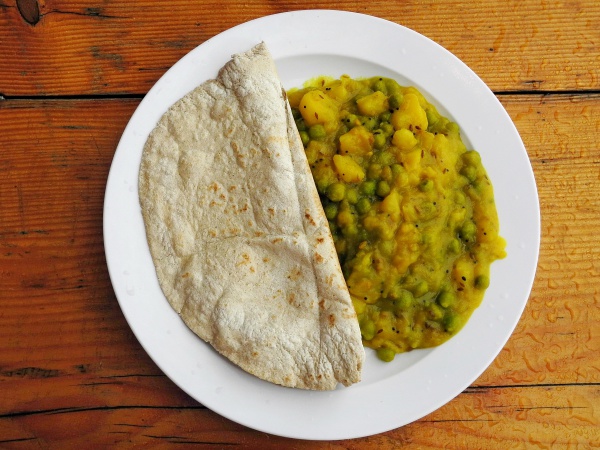Facts About Chapati
Chapati, also known by various names like roti, safati, shabaati, phulka, and roshi, is an unleavened flatbread originating from the Indian subcontinent. It serves as a dietary staple in countries such as India, Nepal, Bangladesh, Pakistan, and Sri Lanka, as well as regions like East Africa and the Caribbean. This versatile bread is made from whole-wheat flour called atta, which is combined with water, oil, and occasionally salt to form a dough using a utensil known as a parat. The dough is then cooked on a tava, a flat skillet.
Chapatis enjoy widespread popularity not only in their countries of origin but also among expatriates worldwide. Their journey across the globe was facilitated by Indian immigrants and merchants. The name "chapat" translates to "slap" or "flat" aptly describing the traditional technique used to shape the dough into thin rounds. These flatbreads have a rich history, with references in historical texts like the Ain-i-Akbari.
The process of making chapatis involves mixing wheat flour, salt, and water to form a soft dough. This dough is kneaded, allowed to rest, shaped into small balls, rolled out into thin rounds, and cooked on a tava. For a special touch, chapatis can be partially cooked on a skillet and then finished over an open flame to make them puff up. They are often enjoyed with a dab of butter or ghee on top.
The size and thickness of chapatis can vary by region, and different cooking methods distinguish them from other flatbreads like roti, paratha, kulcha, puri, and naan. There are also many regional varieties, such as Paneer chapati, Radish (or mullangi) chapati, and Vegetable-stuffed chapati.
In India, chapatis are typically served with curries, dry vegetables (sabzis), chutneys, or dal. In the Maldives, they are a traditional breakfast item, often paired with a dish called mas huni. Not only are chapatis delicious, but they are also nutritious, making them an essential part of the Indian diet.

 Bangladesh
Bangladesh